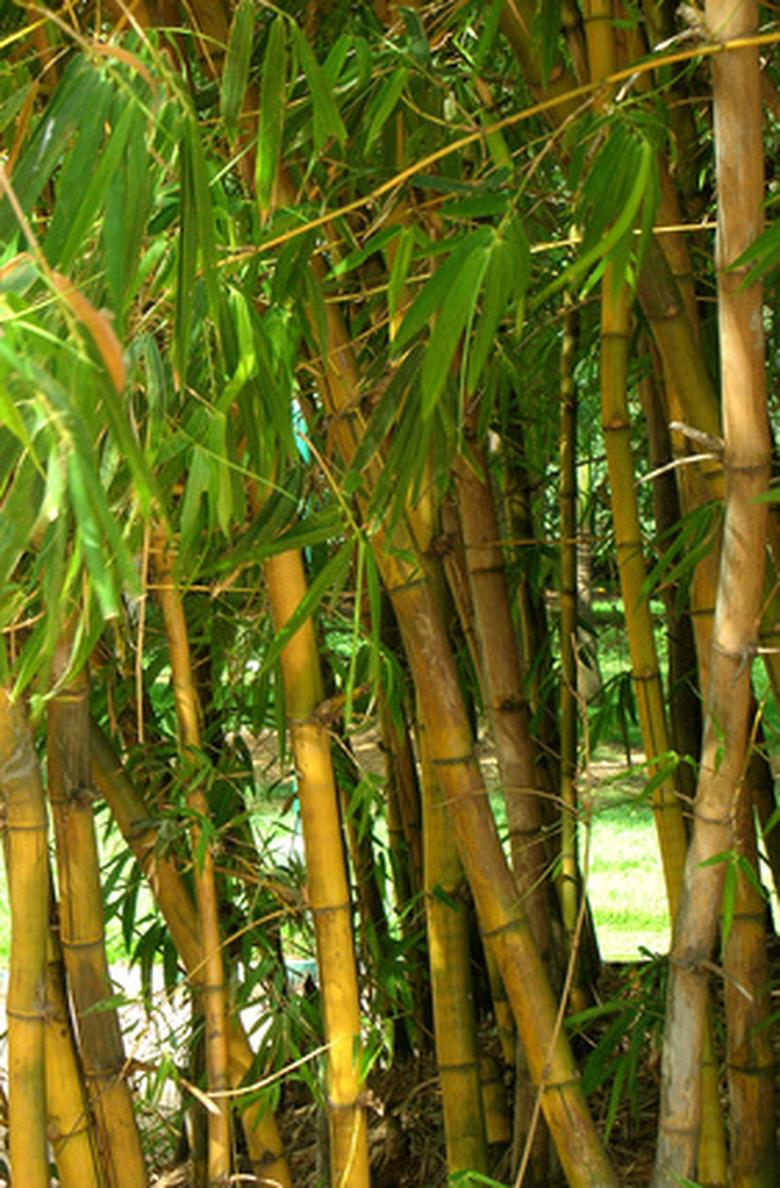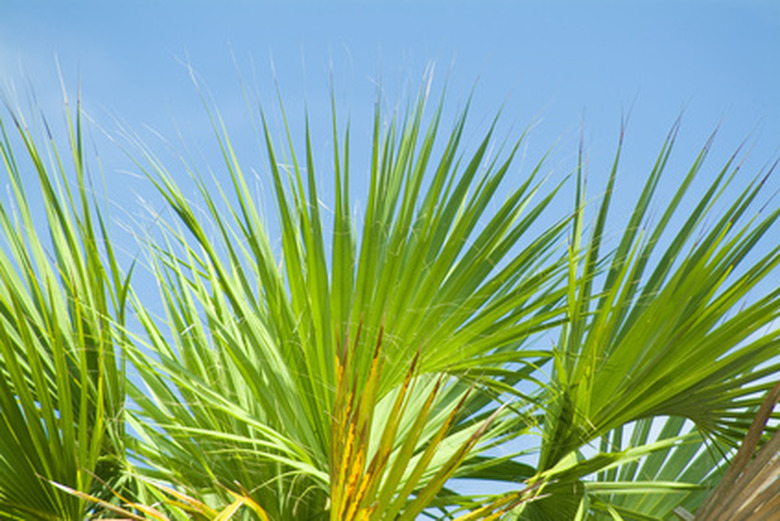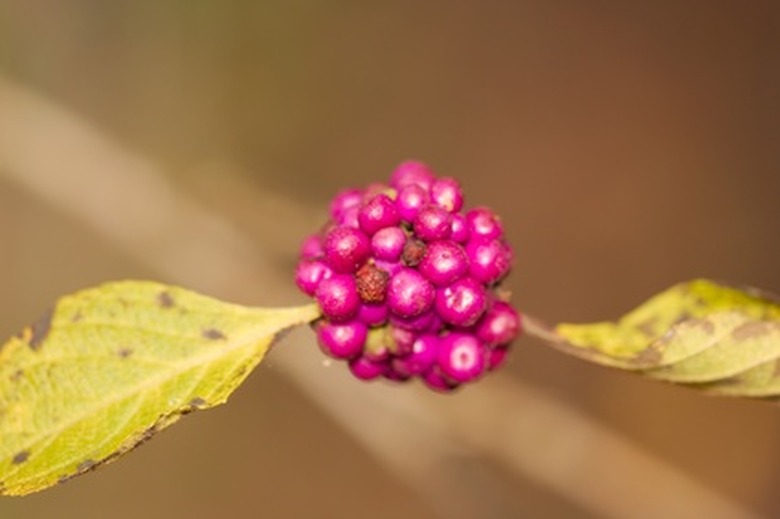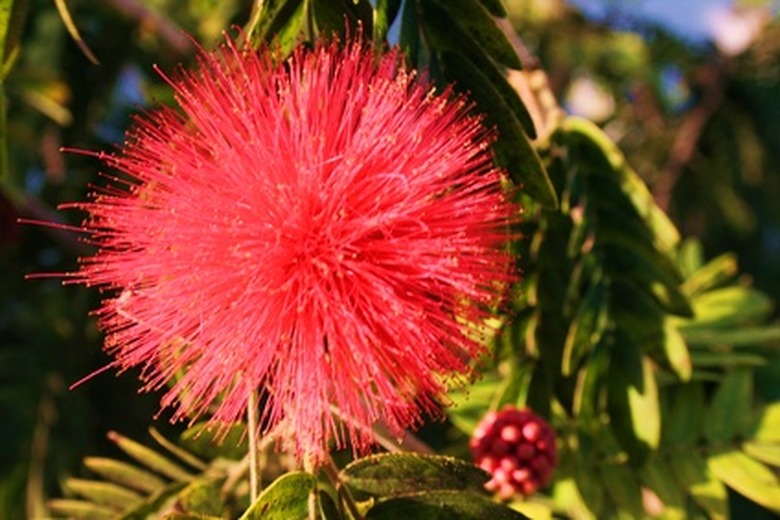The Best Tropical Privacy Plants For Tampa Bay, Florida
Tampa Bay is on Florida's west coast in Central Florida within USDA planting zone 9. Gardeners living directly on the bay will need to consider the salt tolerance of the tropical privacy plants they use in their landscapes. Those living even a few blocks inland can utilize medium salt-tolerant plants, as the salt spray is not as concentrated. Even with the salty conditions, many plants will thrive in this environment.
Palms
Gardeners wanting to add privacy through using palms, have a variety of choices that will form large clumps and tolerate the local environment. Areca palms (Dypsis lutescens) grow well in the central and southern regions and is also known as yellow butterfly palm or bamboo palm. Palms reach heights of up to 25 feet with a spread of 10 feet. Arecas grow many trunks and are considered clumping palms. They have a high drought tolerance and medium salt tolerance.
- Tampa Bay is on Florida's west coast in Central Florida within USDA planting zone 9.
- Gardeners living directly on the bay will need to consider the salt tolerance of the tropical privacy plants they use in their landscapes.
European fan palms (Chamaerops humilis) grow statewide and are very cold hardy. Clumps reach up to 15 feet in height with the same spread and are very low maintenance. Plants have a high drought tolerance and a medium salt tolerance.
Saw palmetto (Serenoa repens) is a Florida native palm that can reach up to 10 feet in height with the same spread. These plants have a high salt and drought tolerance. Yellow/white flowers form in spring, followed by blackberries, which serve as food for wildlife.
Native Shrubs
Native shrubs have a tendency to be less problematic than some non-native species. They are used to Florida's warm, humid and salty environment. Beautyberry (Callicarpa Americana) grows statewide reaching up to 8 feet in height and spread. Plants produce purple flowers springtime throughout fall, with bright, purple berries born in clusters in fall and winter. The berries serve as food for wildlife.
- European fan palms (Chamaerops humilis) grow statewide and are very cold hardy.
Seagrape (Coccoloba uvifera) grows best in Central and South Florida and has a high salt and drought tolerance. Plants grow up to 35 feet in height, with a spread of up to 50 feet. White flowers bloom in spring, followed by edible green grapes also eaten by wildlife.
Rusty Blackhaw (Viburnum rufidulum), also known as southern blackhaw, grows in North and Central Florida and has a high salt and drought tolerance. Plants grow up to 25 feet tall, with the same spread. Foliage turns to scarlet purple in fall, with clusters of white springtime flowers.
Non-Native Shrubs
Many species of non-native shrubs will grow well in the area, creating a privacy screen. Bamboo (Bambusa) has many cultivars that are both spreading and clumping. Height depends on cultivar, as some varieties can reach up to 60 feet tall. Clumping varieties are controllable and create the best privacy hedges. These plants have a medium drought and salt tolerance.
- Seagrape (Coccoloba uvifera) grows best in Central and South Florida and has a high salt and drought tolerance.
Powderpuff (Calliandra) grows in Central and South Florida to a height and spread of up to 15 feet. Plants have a high drought tolerance and medium salt tolerance, producing pink/red/white puff-like flowers, spring through fall.
Hibiscus (Hibiscus) grows statewide reaching heights of up to 20 feet, depending on cultivar, as there are many. Flowers bloom year-round and come in a wide array of colors, depending on cultivar used.



